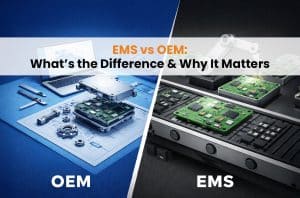In today’s rapidly evolving technological landscape, the demand for printed circuit boards (PCBs) continues to grow. As digital devices emerge as greater vital to our daily lives, the focal point on sustainable practices inside the PCB assembly technique is paramount. Companies are increasingly recognizing the need to minimize their environmental effect while maintaining high standards of efficiency and quality. This weblog delves into the numerous sustainable practices in PCB assembly, emphasizing the advantages and methodologies of enforcing such practices inside the PCB assembly process.
The Importance of Sustainability in PCB Assembly
The PCB assembly process includes numerous steps, including design, fabrication, detail placement, and soldering. Each of these processes has the ability to impact the surroundings. From the chemical substances used inside the fabrication system to the electricity consumed during SMT assembly(Surface Mount Technology), the footprint of PCB production may be massive. Therefore, adopting sustainable practices is not useful for the environment but additionally for the recognition and overall performance of companies involved in PCB assembly.
Sustainable Materials and Components
One of the key elements of sustainable PCB assembly is using eco-friendly substances and components. Traditional PCBs often use materials that can be harmful to the environment, which consist of lead and brominated flame retardants. By opting for lead-free solder and halogen-free laminates, companies can lessen the environmental impact in their products.
Furthermore, the choice of components which is probably RoHS (Restriction of Hazardous Substances) compliant ensures that risky materials are minimized inside the assembly process. This no longer simplest makes the end product extra stable for clients but furthermore simplifies the recycling technique, as fewer harmful substances need to be managed.
Energy-Efficient Manufacturing Processes
Energy intake is an important aspect in PCB assembly process. Implementing electricity-green production tactics can appreciably lessen the carbon footprint of PCB manufacturing. For example, the usage of superior SMT assembly machines that consume much less energy and optimizing production lines to reduce idle instances can result in great electricity savings.
Additionally, businesses can invest in renewable power resources, collectively with solar or wind energy, to supply the energy desired for their operations. This no longer reduces reliance on fossil fuels but moreover aligns with worldwide efforts to combat climate change
Waste Reduction and Recycling
Waste management is another vital factor of sustainable PCB assembly. The PCB board assembly method generates numerous waste, alongside aspect scrap materials, defective additives, and packaging waste. By imposing waste reduction techniques, companies can reduce the environmental impact in their operations. One powerful approach is to undertake a circular economy approach, wherein materials are reused and recycled instead of discarded. For example, organizations can recycle scrap PCB substances and use them in the manufacturing of recent boards. Additionally, implementing stringent quality control measures can reduce the extensive sort of faulty components, thereby minimizing waste.
Green Packaging Solutions
Packaging is an often-neglected detail of the PCB assembly method. Traditional packaging substances, including plastic and styrofoam, ought to have a harmful impact on the surroundings. By adopting green packaging solutions, organizations can in addition enhance their sustainability efforts.
EVs operate much more quietly than ICE vehicles, leading to reduced noise pollution. This benefit is particularly significant in densely populated urban areas where noise pollution is a persistent problem.
Partnering with Sustainable Suppliers
Sustainability in PCB assembly extends past the confines of the producing facility. Partnering with providers who adhere to sustainable practices guarantees that the entire supply chain contributes to environmental conservation. This consists of sourcing raw materials from environmentally accountable suppliers and logistics partners who prioritize eco-friendly transportation strategies.
The Role of Innovation
Innovation performs an important characteristic in advancing sustainable practices in PCB assembly . The best PCB assembly companies in India are likely to invest in research and development to discover new methods and technologies that enhance sustainability. This may additionally need to contain developing new materials with lower environmental effect, optimizing production techniques to reduce waste and strength consumption, or imposing superior recycling strategies
Conclusion
Sustainable practices in PCB assembly are crucial for decreasing the environmental effect of electronic manufacturing. The integration of the above practices not only saves the planet but additionally complements the popularity and performance of the great PCB assembly company in India.
As the choice for electronics devices keeps to thrust upward, the need for sustainable PCB assembly tactics will become extra important. By staying committed to sustainability, companies can ensure a brighter future for both their business and the environment.


